
Rubberized equipment is a strength training tool that is not like either buoyant or drag equipment, which makes it a great way to add variety to your water fitness classes. You can get flat bands, loops, resistance tubing, and tubing with a velcro closure ankle strap on one end. Rubberized equipment comes in a variety of resistance strengths from extra light to extra heavy. Since Latex and rubber tend to deteriorate quickly in chlorinated pool water, it is important to inspect the equipment before using it to make sure it is not on the verge of breaking. Chlorine resistant rubberized equipment lasts longer and is available from places like Theraquatics, which sells equipment specifically for use in an aquatic setting. Rubberized equipment works virtually the same in the pool as it does on land. You need an anchored point. Any muscle action away from the anchored point is resisted and concentric, that is the muscle shortens as it contracts. Any muscle action toward the anchored point is assisted and eccentric, that is the muscle lengthens under tension.



Bands. Latex flat bands are economical, costing $2.99 each. They come in 4-foot lengths and are 5-and-a-half inches wide; they come in 7 resistance levels. Latex-free-flat bands made of synthetic polymer material are available for $2.05 to $3.25 each, depending on which of the 5 resistance levels you want. They come in 5-foot lengths and are 4 inches wide. You can also buy a 150-foot long 4-inch wide latex-free bulk roll that you can cut into whatever lengths you choose. There are 5 resistance levels for these bands. The cost is $52.90 to $109.99 depending on the amount of resistance.


Loops. The Budget Fitness Loop is 99.998% free of latex allergens and costs $2.99 each. It has a 24-inch circumference and is 1-and-a-half inches wide. It comes in 5 resistance levels. The Aqua Loop costs $9.99 and comes in one resistance level. The blue extreme resistance level loop has been discontinued. My experience with the Aqua Band made by the same company is that the white lettering on the band began to peel off after several uses, leaving small white flecks in the water, but their band has been discontinued. Hopefully they have solved that problem with the loop. Loops are good for placing around the ankles or thighs and doing lower body work. You will have to be the judge on whether to use loops with your water fitness class. Many of my participants would have difficulty stepping into them or taking them off in the water.


Resistance Tubing. The Resistacizer comes in 4 colors/resistance levels, yellow/light for $5.25, red/medium for $5.80, blue/heavy for $7.00, and black/extra heavy for $8.95. The tubes are made from rubber with handles at both ends. A Safety Tube is also available. It is enclosed in an elastic nylon sheath to prevent the tubing from snapping and hitting the exerciser. This is especially important in assisted living centers and nursing homes where safety is paramount. The Safety Tube costs $9.99. I have 3 sizes of the Resistacizer that I use with my classes.

Pool Aqua Band. The Pool Aqua Band has been heavily advertised in Akwa magazine. It is tubing with a velcro enclosure ankle strap. It costs $25.50 and comes in 5 resistance levels. The velcro strap can be attached to the ankle before you get in the pool and you only have to hold the other end so that you do not trip on it when going down the pool ladder. That makes it easier to use than loops. You can use your ankle as the anchored point and work the upper body or you can use your arm as the anchored point and work the lower body. This makes the Pool Aqua Band truly versatile. However, you cannot use the Pool Aqua Band in the deep end since you could not stand on one foot and stabilize.
Using Rubberized Equipment. In the pool you could wrap your band or tubing around a pool ladder to use as your anchored point, however that is impractical in a class setting. Therefore, you need to find other ways to create anchored points. You can hold one end of the equipment stable with one hand for your anchored point, and pull the equipment with the other hand. That works for scapula retraction, shoulder flexion, shoulder extension, and triceps extension. From a single leg stance with the other knee lifted, or from a seated position you can place the band under your thigh(s), making the thigh your anchored point. That works for shoulder abduction and biceps flexion. Place the tubing behind your back, making your back the anchored point. That works for chest fly, chest press, and rotator cuff internal rotation. Hold the ends of the equipment in front and pull the ends apart for shoulder horizontal abduction and rotator cuff external rotation. This makes the center of the of the tubing the anchored point. With bands, you wrap the ends around the hand until the length is appropriate for the exercise you are performing. With resistance tubing, I hold the handle in one hand, and thread my wrist through the opposite handle, then I position my hand on the length that is appropriate for the exercise. In this way I avoid having a loose handle flopping around in the water. (See the photo at the top of this post.) Modify your exercises by pulling away from the anchored point quickly, pausing, and then releasing the resistance slowly to focus on eccentric muscle actions. Another option is to pull away from the anchored point, pause, release the resistance halfway, pause again, then release it the rest of the way. There are pictures of sample exercises or videos on most of the Theraquatics links above. Check out my YouTube video link for a demonstration of shoulder horizontal abduction. Water Fitness Progressions has sample lesson plans and circuit class ideas using rubberized equipment in both shallow and deep water.
After a strength training class using rubberized equipment, I fill my bath tub with water to rinse the chlorine off, then hang them across the shower bar to dry. It is recommended to store rubberized equipment in a cool, dark place, away from direct sunlight. Put a comment on the box below and let me know which you prefer: bands, loops, resistance tubing or pool aqua bands?
See you in the pool!

Chris Alexander

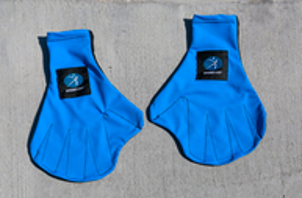








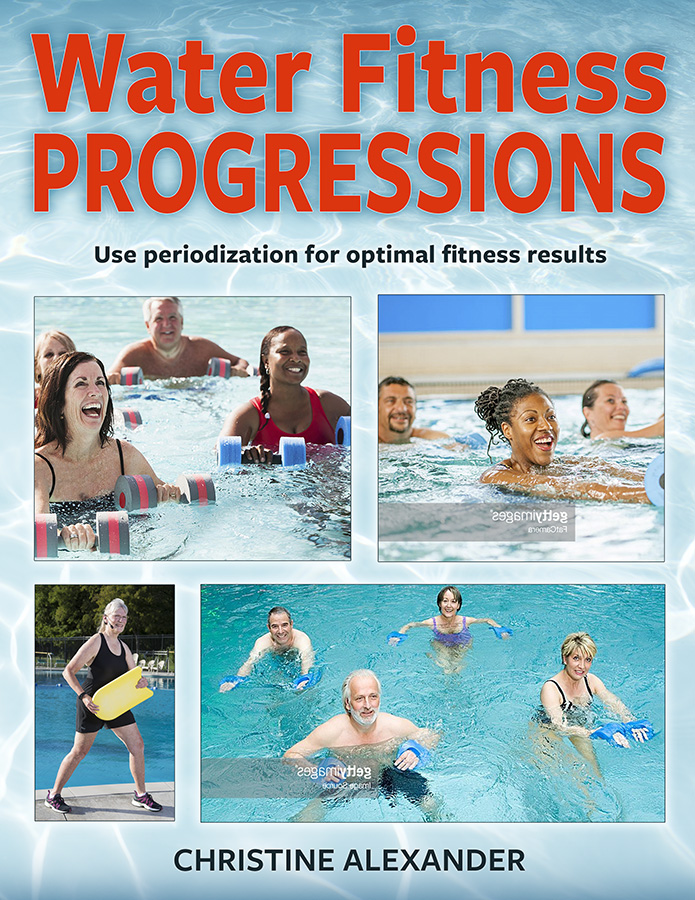




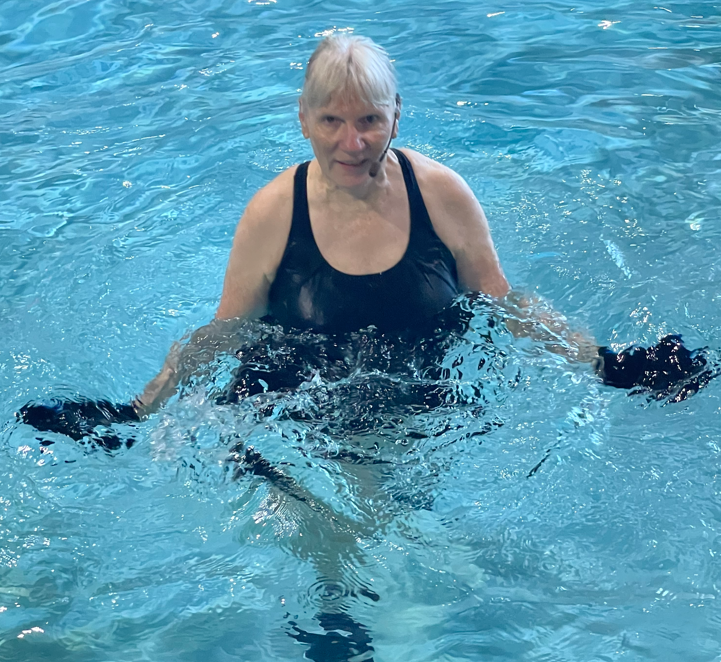
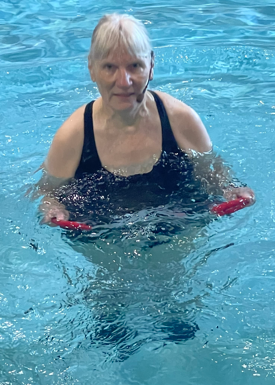



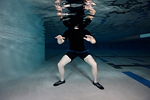
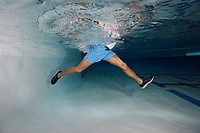

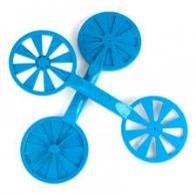

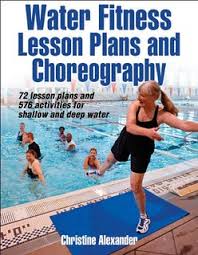
Leave a Reply